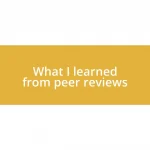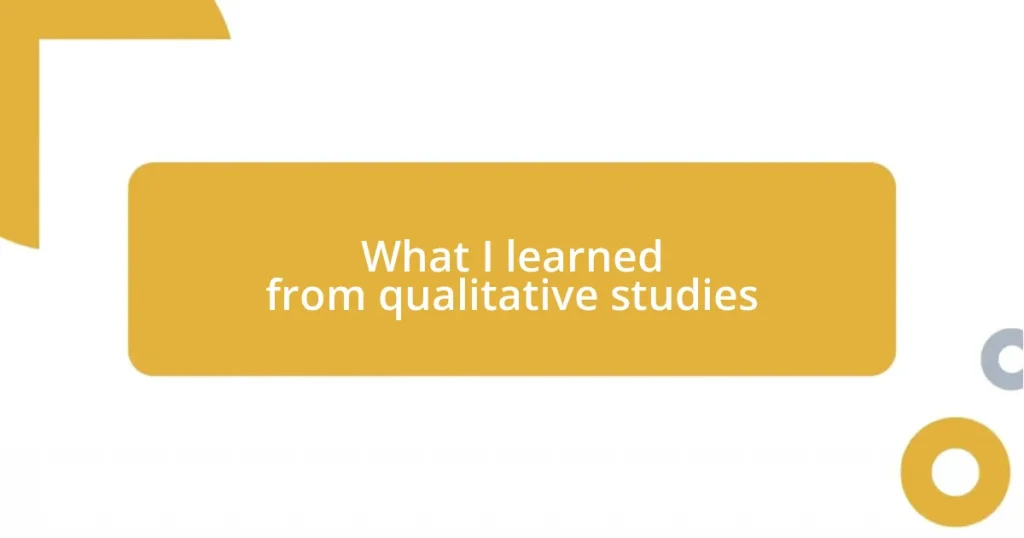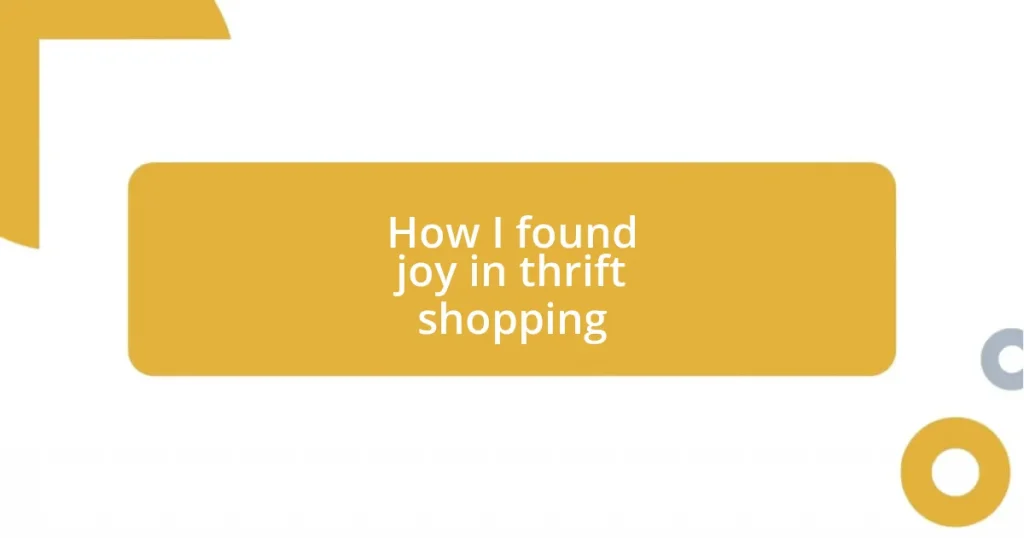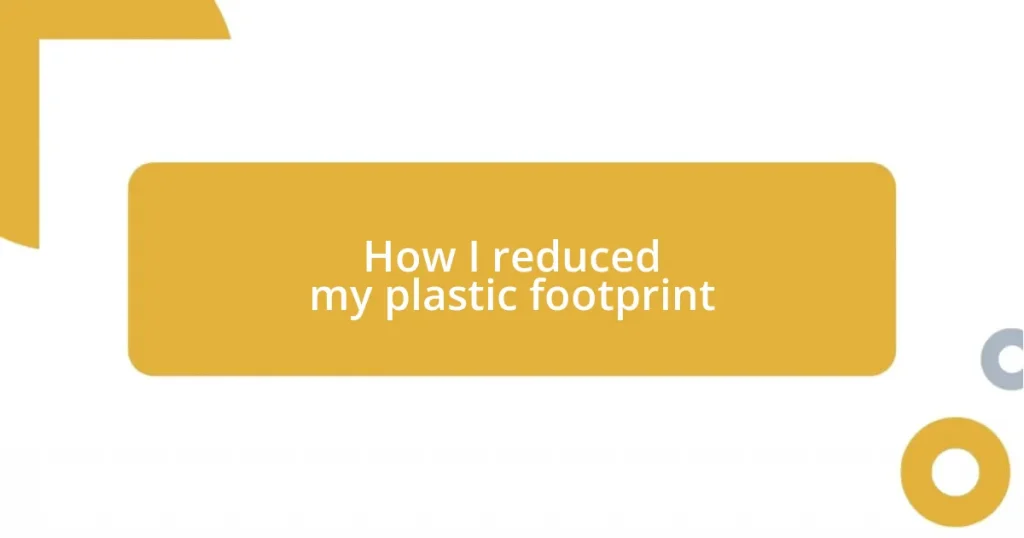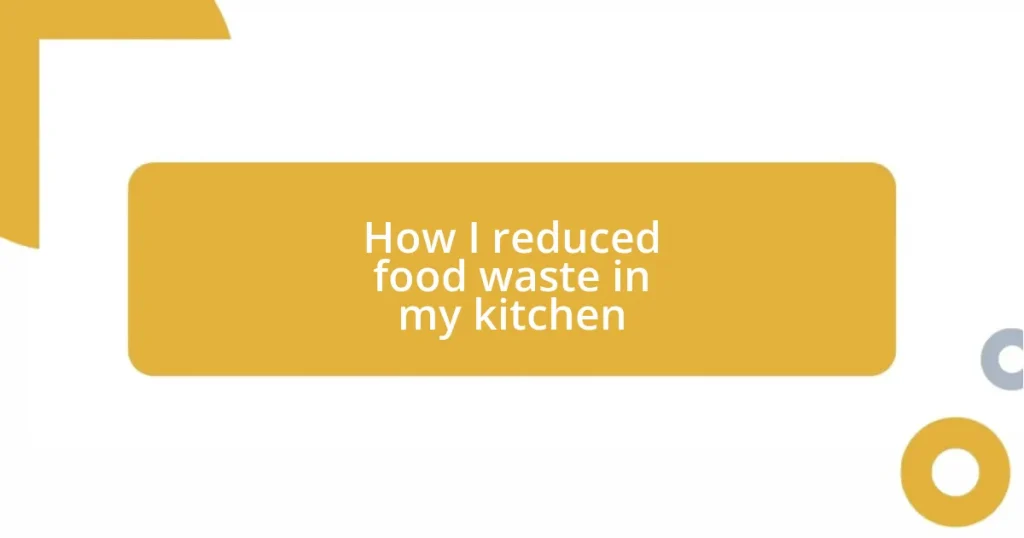Key takeaways:
- Qualitative research reveals deeper insights into human behavior, emotions, and motivations beyond quantitative data.
- Key methods include interviews, focus groups, and observations, each offering unique ways to understand participants’ experiences.
- Effective analysis involves coding, theme development, and reflexivity to enhance the validity of findings.
- Practical applications of qualitative research can drive real-world change in areas like healthcare and policy-making.
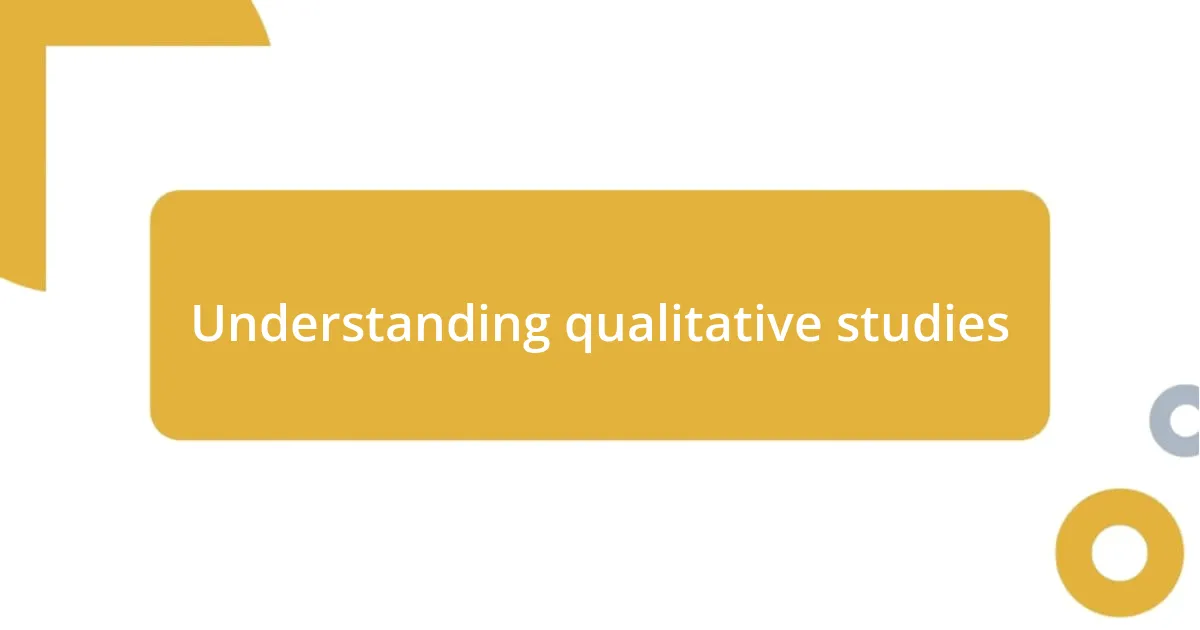
Understanding qualitative studies
Qualitative studies dive deep into the human experience, allowing us to explore feelings, thoughts, and motivations beyond mere numbers. When I first encountered qualitative research, I was struck by its richness; it felt like stepping into someone else’s shoes, understanding their unique journey. Have you ever wondered how personal stories can unlock broader social themes? That’s precisely what qualitative studies achieve.
One aspect that fascinates me is the method of data collection itself—think interviews, focus groups, or observations. In one of my projects, I conducted interviews that revealed unexpected emotional layers beneath participants’ responses. This firsthand exploration is unlike any survey; it’s a conversation that opens doors to understanding complex social dynamics. It forces you to listen, really listen, to what people are saying.
Moreover, qualitative studies emphasize context. I’ve seen how a single narrative can shed light on cultural nuances that quantitative data might overlook. Imagine learning not just what people do, but why they do it—how their experiences shape their perspectives. Isn’t it incredible how much depth we can uncover when we prioritize stories over statistics?
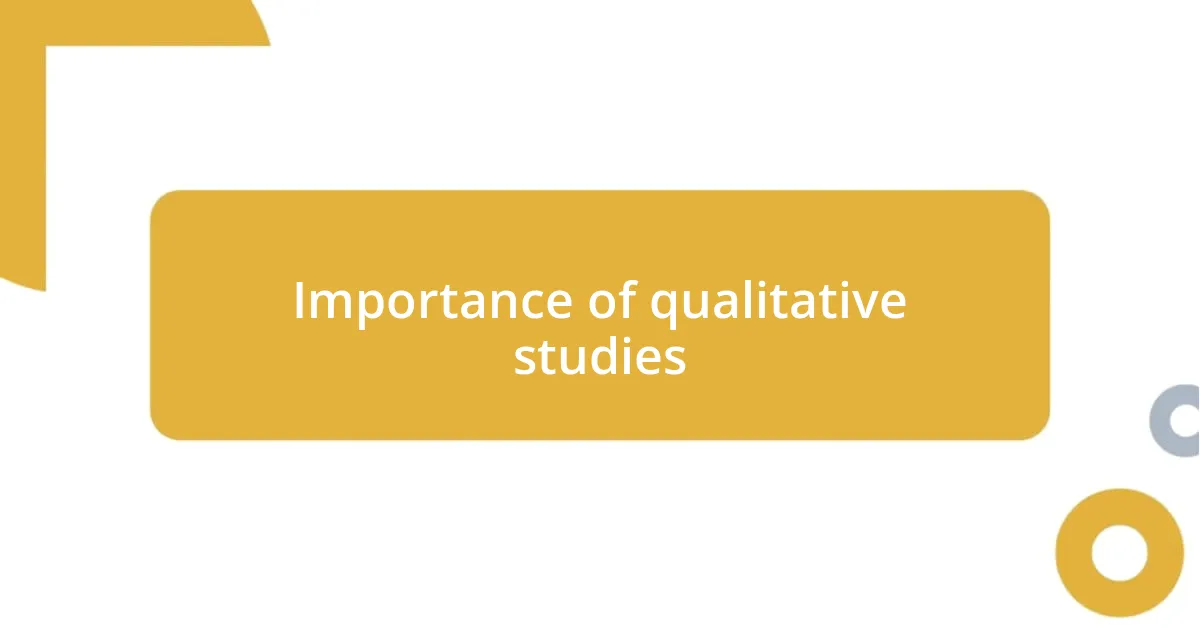
Importance of qualitative studies
Qualitative studies hold immense significance because they allow researchers to gain a profound understanding of human behavior and emotions that quantitative data often overlooks. I recall a project where I facilitated a focus group discussion. Initially, participants approached the topic with guarded responses, but as the conversation flowed, they began to share heartfelt stories. Their openness illuminated issues and sentiments that numbers could never capture, highlighting the power of personal connection in research.
Here are some key reasons why qualitative studies are so essential:
- They reveal the “why” behind actions, providing context and depth.
- They generate rich, detailed data that reflects real-life complexities.
- They prioritize human experience, revealing emotional insights that resonate with participants.
- They foster a collaborative atmosphere, encouraging diverse perspectives to emerge.
- They adapt to participants’ narratives, allowing themes to surface organically.
In my experience, these aspects create a more nuanced understanding of societal issues, making qualitative research not just informative but transformative.
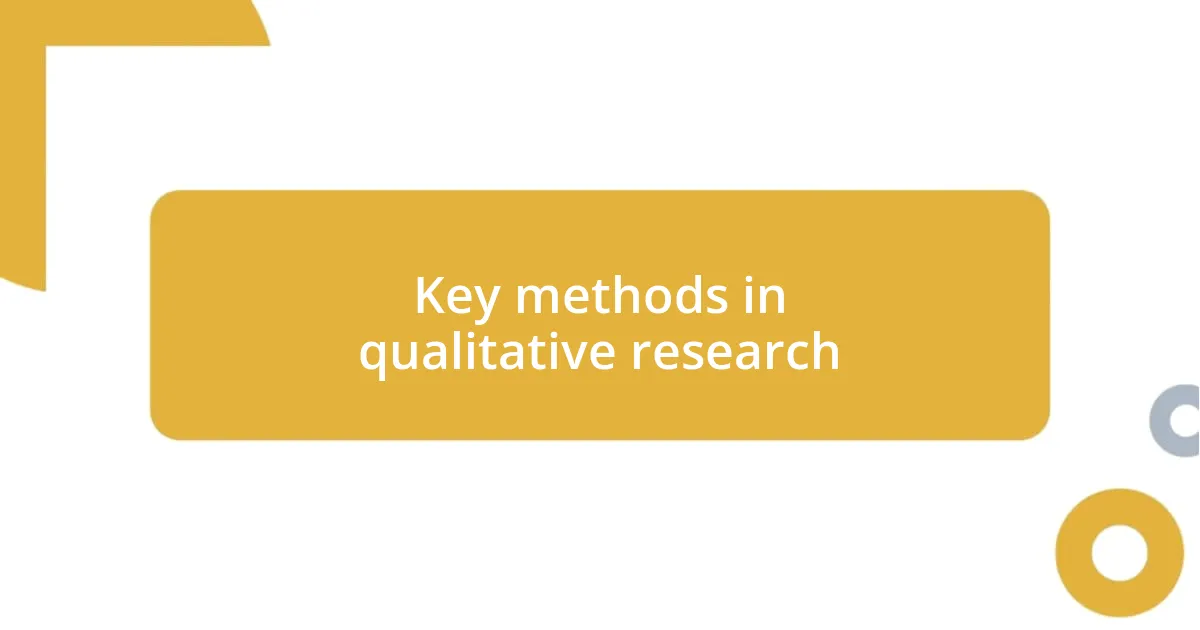
Key methods in qualitative research
The key methods in qualitative research offer distinct pathways to understanding human experiences. One of the most prevalent methods is interviews, which allow researchers to engage deeply with participants. Personally, when I conducted in-depth interviews for a project on community resilience, I was surprised by the wealth of emotions that surfaced. Each conversation turned into a journey, revealing layers of strength and vulnerability that I hadn’t anticipated. Wouldn’t you agree that hearing someone’s story can sometimes be more illuminating than reading a report?
Focus groups are another essential tool in qualitative research. They create a dynamic space for individuals to interact and share their views. I remember leading a focus group where the synergy among participants led to spontaneous insights. Their discussions sparked revelations that wouldn’t have emerged in one-on-one interviews. It’s fascinating how diverse perspectives can intertwine and create new understandings.
Lastly, observational methods hold a unique charm. They let researchers witness behaviors in real-life contexts, adding a richness that self-reported data can’t provide. During an observational study at a community event, I saw firsthand how people interacted and responded to their environment. It drove home the point that actions often speak louder than words, revealing underlying motivations that participants might not articulate. Isn’t it enlightening to realize how much we can learn just by watching?
| Method | Description |
|---|---|
| Interviews | One-on-one conversations that explore deeper emotional and personal insights. |
| Focus Groups | Group discussions that generate diverse perspectives and spontaneous insights. |
| Observations | Real-time witnessing of behaviors in context, providing a richer understanding of actions. |
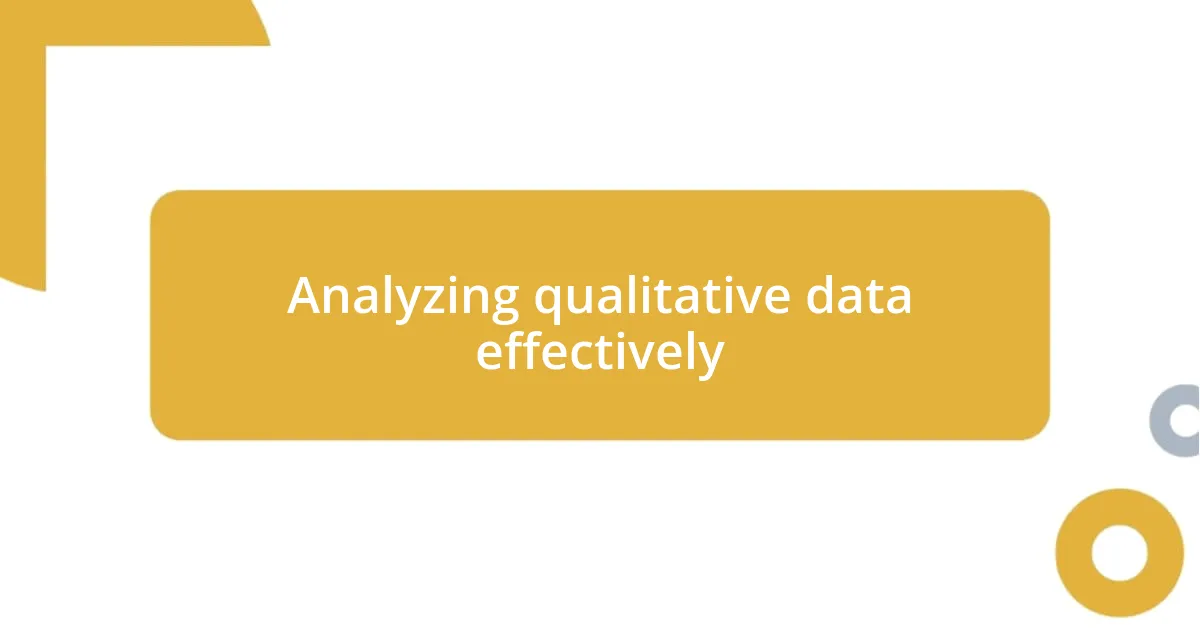
Analyzing qualitative data effectively
Effective analysis of qualitative data hinges on a thoughtful approach to coding and theme development. When I analyzed interviews for a community health project, I found that breaking down responses into manageable segments allowed me to identify recurring themes. This process was like piecing together a puzzle; as the themes emerged, it became clear how participants intertwined their experiences.
Additionally, it’s crucial to engage in reflexivity—reflecting on how my biases might influence the interpretation of data. I remember a time when my own experiences shaped the way I viewed participant responses. Recognizing this helped me approach the analysis with greater objectivity, ensuring that the voices of participants were heard authentically. Isn’t it fascinating how self-awareness can enhance the validity of our findings?
Lastly, the use of software tools can be a game changer in organizing qualitative data. During a particular analysis, I utilized NVivo, which helped me categorize and visualize the data. This not only streamlined the process but also illuminated connections I might have overlooked otherwise. With the right tools, analyzing qualitative data transforms from a daunting task into an insightful exploration.
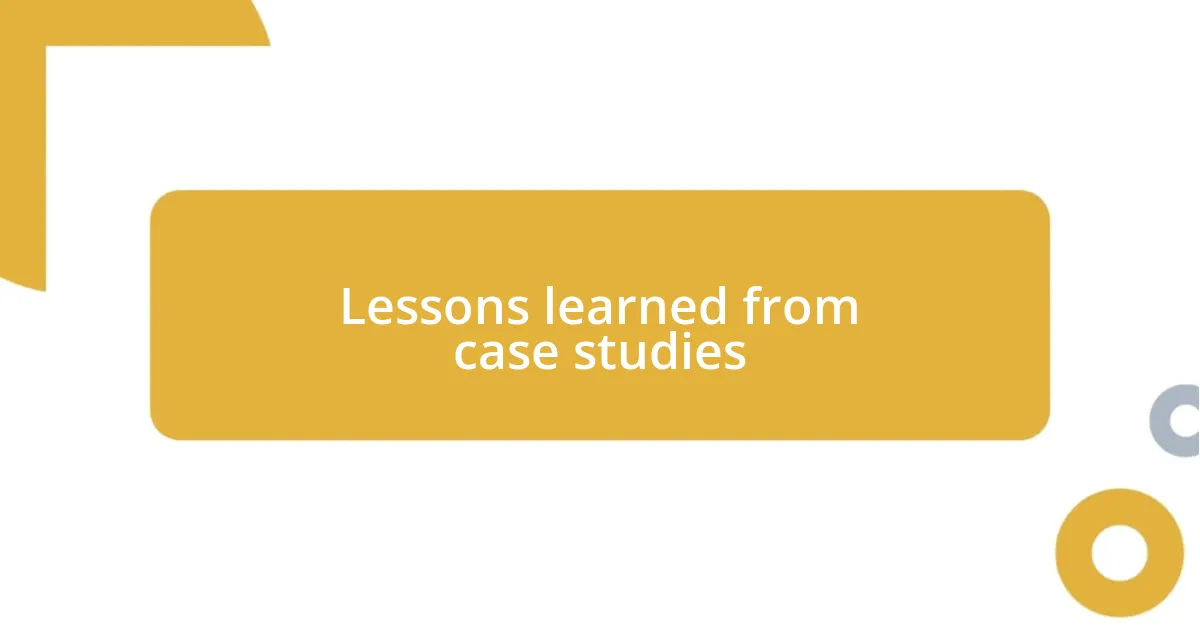
Lessons learned from case studies
Case studies offer an incredible opportunity to uncover the nuances of real-world situations. When I delved into a case study on a local non-profit organization, I was struck by how context-specific factors shaped their strategies. The intricate details from that organization illuminated broader trends I hadn’t initially considered. Have you ever found that the seemingly small decisions can lead to significant outcomes?
I remember a particular instance where a case study revealed the importance of leadership dynamics within a team. As I analyzed how different leaders approached conflict resolution, I began to appreciate the profound impact of personal styles on team morale and productivity. This insight taught me that leadership is more than just a title; it’s about cultivating a culture of support and understanding. Isn’t it interesting how one person’s approach can resonate through an entire organization?
Moreover, I learned that storytelling is a powerful element in case studies. Each case often unfolds like a narrative, weaving individual experiences into a larger tapestry of insight. While examining the journey of a former participant, I felt a profound connection to their challenges and triumphs. Their story not only enriched my understanding but also reinforced the idea that behind every data point is a human experience waiting to be explored. Have you paused to think about the stories that breathe life into the statistics?
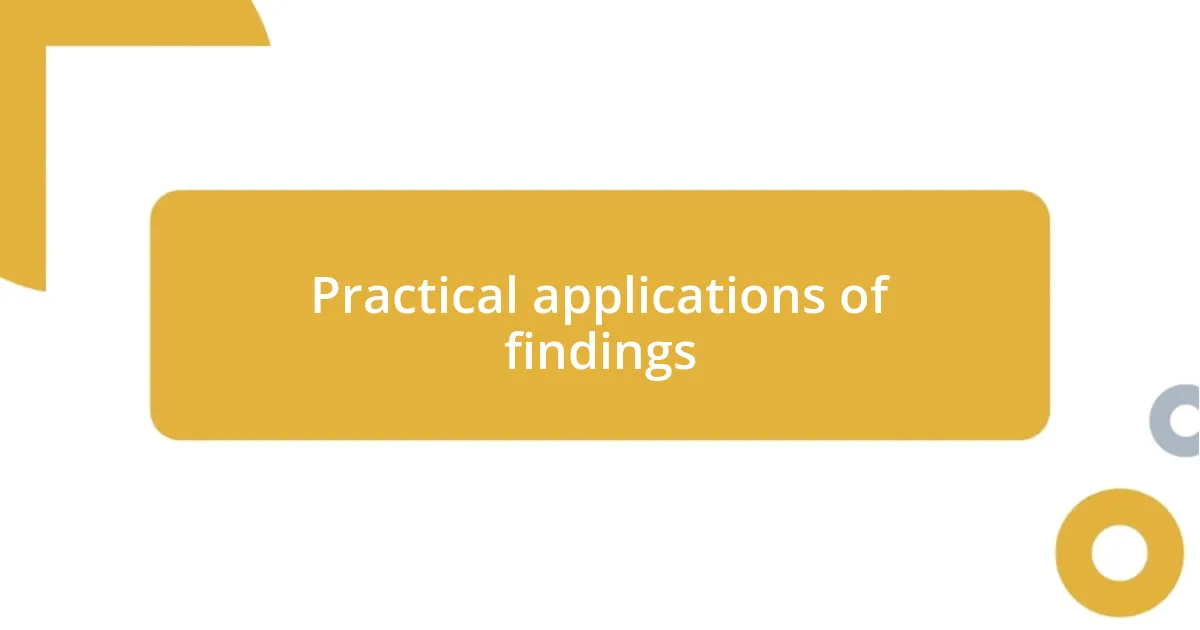
Practical applications of findings
Understanding the practical applications of qualitative findings can truly bridge the gap between research and real-world impact. For instance, after analyzing interview data about patient experiences in a healthcare setting, I worked with a local clinic to develop training materials that addressed specific concerns raised by patients. The transformative power of listening to participants’ voices was palpable; seeing those insights directly influence staff training enriched my understanding of how qualitative research can enact tangible change.
One memorable experience was when my research highlighted the importance of mental health awareness among teenagers. Armed with these insights, I collaborated with a youth organization to design a campaign that resonated with their audience. Watching the young participants engage with the materials and share their perspectives was a reminder that when research informs creative initiatives, it can encourage open conversations that might otherwise remain hidden. Have you seen how effective communication can change lives?
Additionally, I discovered that qualitative findings are immensely valuable in policy-making processes. I remember presenting my analysis of community feedback to local government officials, illustrating the need for more accessible mental health services. The shift in their perspective reinforced my belief that evidence-based narratives can shape policies that reflect the community’s needs. It’s incredible how sharing these personal stories can summon actionable change. What other ways do you think we can leverage qualitative insights for broader societal impact?
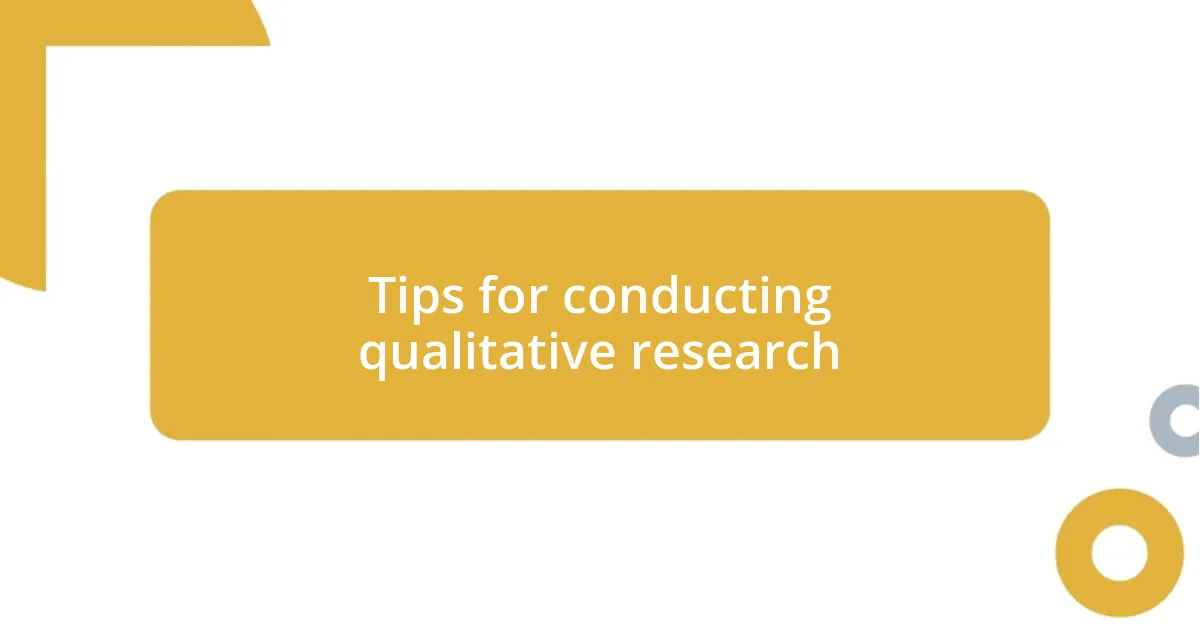
Tips for conducting qualitative research
When diving into qualitative research, one of my best tips is to embrace flexibility. I remember conducting interviews and finding that participants often strayed from the script, sharing insights I hadn’t expected. It’s moments like these that can lead to richer, deeper understanding. Have you ever caught yourself missing a fantastic opportunity because you were too rigid in your approach?
Another key aspect is to build trust with your participants. My experience has shown me that when people feel comfortable, they open up in ways that yield profound revelations. For instance, during a focus group discussion about educational challenges, the atmosphere shifted once participants realized I was genuinely invested in their stories. An open dialog allows for authenticity, which is where the real insights lie. How do you think we can create spaces that encourage such openness?
Lastly, it’s crucial to remain reflective throughout the process. After completing one study, I took time to journal my thoughts and feelings about the experience, which greatly enhanced my understanding of my biases. Reflecting on the emotions tied to the data helped me see how my perspective shaped the analysis. Ever notice how your own experiences color the lens through which you view your research? Engaging in self-reflection can unveil hidden biases that could impact your findings.







